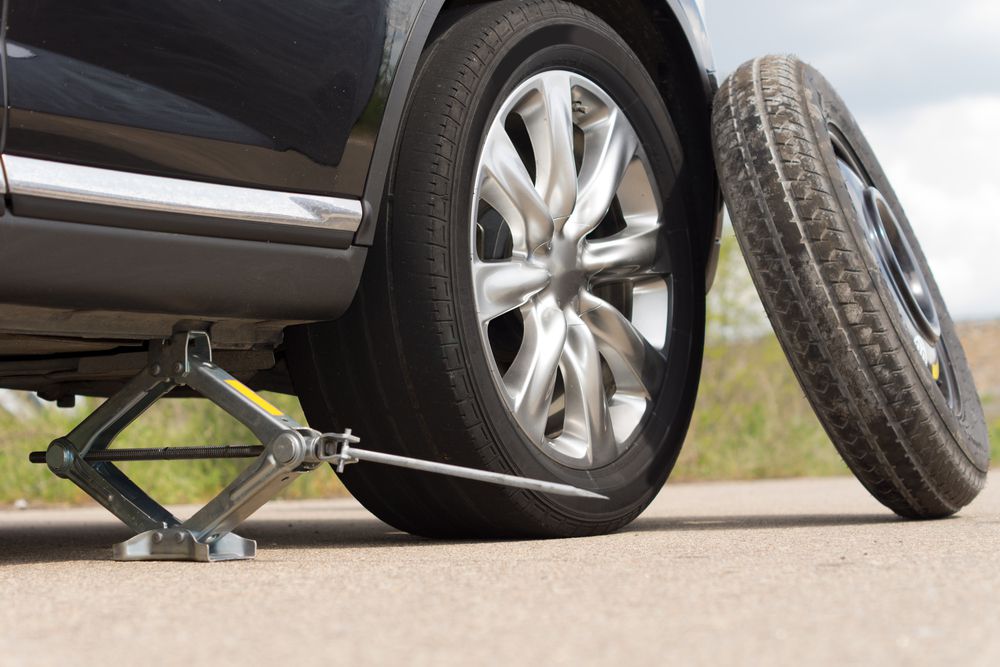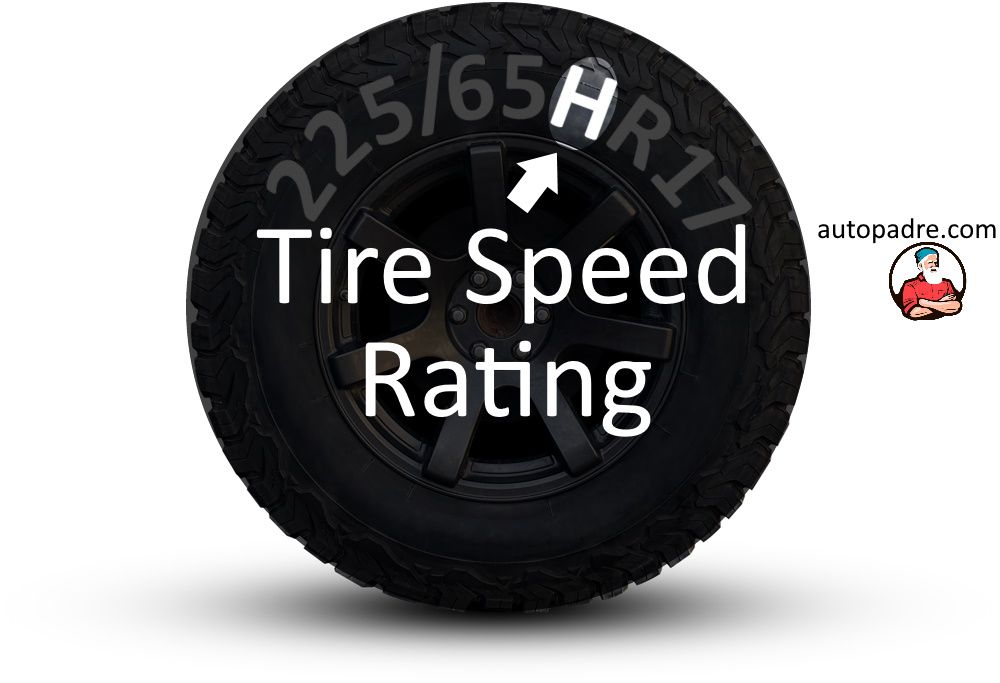
A spare tire is not the same as a regular tire.
A spare tire can be driven for a short time but should be replaced by a standard tire as soon as possible. In the meantime, you may wonder how long and fast you can drive on a spare tire?
Spare tires are only designed to drive at speeds up to 50 mph, although driving even slower is advisable.
Spare tires are prone to blowing out without adhering to these speed guidelines, causing drivers to lose control of their vehicles and putting other drivers and pedestrians in danger.
In this article, we will unpack all you need to know.
We'll discuss spare tire types, including run-flats, donuts, and space-savers. Then, we'll discuss the risks of driving on highways with spare tires. Let's get into it!
 Donut (space saver) spare tire leaning againt regular tire
Donut (space saver) spare tire leaning againt regular tire
Types Of Spare Tires
There are different types of spare tires that you could use in the case that you experience a flat tire:
Each of these types of tires has different guidelines when it comes to how fast and far you can drive them.
However, all of them are temporary tires, except run-flats, which have their own limitations when it comes to repairs.
Spare Space-Saver Tire
The spare space-saver tire is a type of spare tire that is extremely limited in terms of its use (they're even sometimes called "limited use."
Compared to your regular tires, space-savers are smaller (up to 15 lbs smaller), thinner, and less durable.
It would be best if you replaced a space-saver spare tire with a standard tire as soon as possible.
They're often called "space-saver" tires because you can store them inside compact cars and smaller vehicles.
They often fit in the trunk or another storage compartment inside the car.
Chances are that your vehicle comes with one of these spares, but not all vehicles have them.
Donut Spare Tire
The terms donut and space saver tire a used interchangeably in the tire industry.
Full-Size Spare
A full-size spare, as its name implies, is a spare tire that is the recommended size for driving as stated by the vehicle's manufacturer.
Although a full-size spare tire is the same size as the manufacturer's recommended tire size, it may not be the same speed rating, although they regularly are.
So, how fast can you drive on a full-size spare tire?
How fast you can drive on a full-size spare tire depends on the tire's speed rating, which can be found on the side of the tire, as shown in the image below.
For example, a H-rated tire has a speed rating of 130 mph.
 How to read the speed reading on the side of a tire
How to read the speed reading on the side of a tire
A full-size spare tire requires a lot of storage space, so they're often mounted to the outside or back end, often underneath a vehicle.
This is why you'll likely only find larger vehicles equipped with this type of spare, such as pickup trucks or SUVs.
Run-Flat Tires
Run flat tires are not spare tires, but we included them in our list because they are tangentially related.
Run flat tires attempt to remove the necessity for a spare tire by, as their name suggests, maintaining their structural rigidity even with no tire pressure by way of a rigid, reinforced sidewall.
And you don't need a spare if you have this type of tire set.
If your tire goes flat, you can still drive on it for up to about 50 miles at a maximum speed of 50 mph, although these guidelines vary depending on the tires.
The downside to run-flat tires is they generally perform worse and give a less comfortable ride than a standard tire.
What's The Maximum Speed You Can Drive On A Spare Tire?
How fast can you drive on a donut spare tire? What about a run-flat? Compare maximum speeds in the table below.
Speed Limitations of Spare Tires
| Spare Type |
Speed Limitations |
| Spare Space-Saver Tires (Donuts) |
Maximum driving speed of 50 mph |
| Full-Sized Spare Tires |
Usually Same speed limitations as regular tires |
| Run-Flat Tires |
Maximum driving speed of 50 mph in most cases (when punctured) |
Maximum driving speed of 50 mph
Confirm the speed rating of your spare tire on a tire speed chart like the one below.
 Tire Speed Rating Chart
Tire Speed Rating Chart
How Long Is It Safe To Drive On A Spare Tire?
Getting a flat tire is a considerable inconvenience. It not only strands you where ever the flat tire occurs, but even once you get your spare tire installed, you still need to go to a tire shop to get your original tire fixed.
In general, apart from full-size tires, you shouldn't drive on a spare for more than 50 miles.
If you're on a full-size spare, you will be safe to drive a considerably longer distance than if you're on a donut spare. However, it would be best if you fixed your flat tire as soon as possible so that you're always traveling with a functional space.
Can I Drive On The Highway With A Spare Tire?
Space-saver and donut spare tires often compromise your vehicle's ability to handle turns, properly brake, and come to complete stops, which becomes hazardous.
Run-flats aren't great on highways when punctured since they have a maximum speed suggestion of 50 mph.
This is why driving on highways and higher-speed roads with space-saver spares is not suggested, putting you at risk of your tire blowing out and you losing control of your car.
With full-sized spares, you don't have to worry about compromising speed, distance, or performance.
Conclusion
How fast you can safely drive on a spare tire depends on a few factors, including the type of the spare tire, the condition and age of the spare tire, its tire pressure, and its speed rating.
Different types of spares have different rules - 50 mph maximum for space-savers, donuts, and run-flats. On the other hand, full-sized spares are safe to drive at highway speeds.
Spares and run-flats should not be driven on for more than 50 miles, except for full-sized spare tires being a bit farther.
Remember that spare tires are designed for emergencies only and should suffice to get you to the nearest mechanic or service center because if your spare tire fails, you won't have a replacement.
Refrences
https://www.tyresafe.org
https://en.wikipedia.org
https://www.carshtuff.com
https://www.tirerack.com
https://www.aaa.com